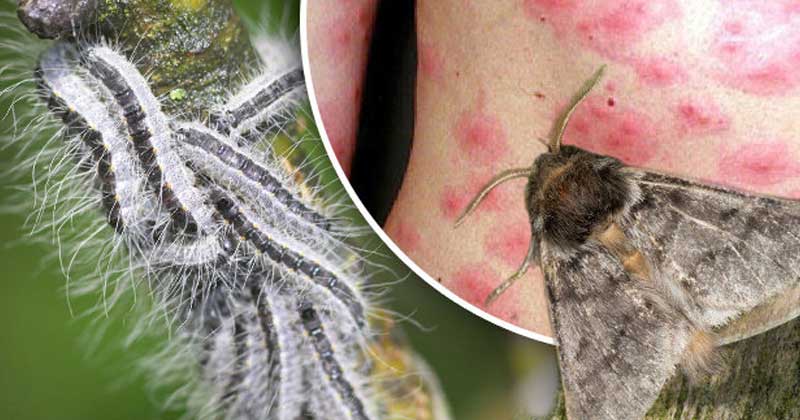Wow. This one kind of seemed straight out of a comic tale book where young minds frazzled by lack of imaginative, independent thinking graze on stale ideas. Rather, it also seemed like a mayhem causer where some same insects feed on human kinds. It’s the kind of stuff- you and I- aren’t used to reading in real life, isn’t it? A city targeted by a toxic caterpillar outbreak. How bizarre is that, really?

But for now, there’s genuine reason to believe that the English capital has been struck by what are called toxic caterpillars and believe it or not- there’s reason for concern. Known to be causing rashes on skin and in worse cases, even asthmatic problems, there’s a surprising shred of gloom that has descended on London’s streets.
The technical name for this harmful species of insects is Oak Processionary moths or OPM. Currently, these are in their larval stage and they have been spotted across the south-east of England and particularly in the cosmopolitan capital city. Medical experts point to matters of immediate concern by stating that the hairs that grow on the body of the caterpillar’ can cause fevers and that’s not all. Even eye and throat infections are an after effect of coming in the slightest of contact with the caterpillars.
The biggest infestations of the OPM- at larval stage- were recorded in greater London. The Forestry Commission says, that there is reason to believe that it might take for some before the infectious caterpillar outbreak can be normalised or simply, contained. The entire region from Kingston upon Thames to Brent has been struggling with the infections. And that is not all. Some infestations were also recorded in areas such as Bracknell forest, Slough, Guildford. But there’s also reason to believe that there were ominous signs early on that perhaps might not have resulted in containable action in great immediacy.
In April 2018, OPM caterpillars were seen emerging out of egg shells in the outskirts of London. There were egg plaques that were hatched. Even trees had to be treated later on, as a result. There seems to be an extensive programme for effective, correctional treatment in the pipeline. It will be executed in May-June. Typically, overgrown allotments and garden areas can be ‘bugged’ by this insect. Once someone comes into contact, a lot of symptoms can be found out. And these can vary from being mild to concerning. What could start from being a mild rash could well grow on into becoming a lanky sore irritating rash in some time. A gardner was afflicted with some when she experienced a rash on her tummy.
Upon contacting her doctor, she was told that she had been severely affected by an OPM causing rash. Following the outbreak of the aforementioned concern, a health directive has been issued for the city of London and it reads as following:

Do not touch or come in contact nests or caterpillars
Do not let children or anyone come in contact with caterpillars; ensure children abstain from touching nests or caterpillars
Don not let animals touch or come in contact with nests or caterpillars.
Do not try removing nests or caterpillars yourself.
Well, for now, London- it might make sense to be on guard.


